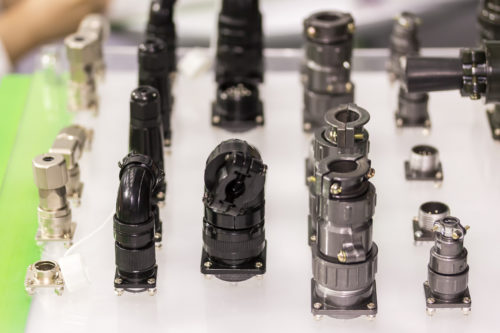As technology continues to advance, it finds new applications in ever more challenging environments. In these extreme conditions, regular connectors won’t do. Harsh connectors feature a robust design with ruggedized housings to protect against water ingress, rough handling, and other tough environmental conditions.
Choosing the Right Rugged Connector
There are different harsh environment connectors designed to meet the demands of different industries, from military and marine to transportation and medical. To determine which one is best for your application, you need to understand the environment, the connector’s function, and the connector’s strengths and limitations. When choosing a rugged connector, consider the following:
What’s the Application?
Will your connector be exposed to extreme temperatures, water, pressure, altitude, vibration, or salt? Does it need to meet specific industry standards? Does it require EMI shielding? Answering these questions based on your specific application will narrow down your choices and make it easier to select the proper connector.
Connector Basics
Consider the size of the contact and wire as well as how much electrical current an individual contact can carry. The voltage rating is dependent on insulation materials, insulator geometry, and contact spacing.
Sterilization
For medical and laboratory settings, it’s important to understand how the connector will be sterilized: chemically, with steam, or with radiation? Your connector may need to be able to resist corrosion, moisture, or pressure during the sterilization process.
Connector Reliability
If your connector will be mated and unmated frequently, choose one that’s rated for at least twice the number of mating cycles expected. Also consider the connector’s reliability in terms of temperature resistance, sealing, and durability.
Connector Materials
The material you choose is a matter of budget, application, weight requirements, and desired lifespan. For durability, brass connectors with nickel or chrome plating and stainless steel are a go-to choices, while plastic is reserved for disposable and short-term applications. Aluminum is a lightweight choice that’s also good for miniaturization.
Size
Smaller is generally better, but small connectors still need to hold up in the given environment. Pin size affects how much power can be carried, making it a key consideration when determining connector size, along with termination methods, pin count, current capabilities, voltage, and more.
Key Features & Benefits of Harsh Environmental Connectors
Rugged connectors are built to protect against several environmental conditions, including:
- Moisture. Rugged connectors protect against rain, humidity, vapor, and submersion in water.
- Dust. Dirt and debris are present in many outdoor and industrial settings, which is harmful to electrical systems.
- Extreme Temperatures. Both heat and cold can damage technological components.
- Explosive Environments. Certain settings may contain combustible gas, mist, or dust, which can lead to an explosion.
- Rough Handling. Power and data connection can be compromised after connectors are dropped, dragged, or exposed to vibration.
- Pressure. Marine and aerospace applications are often exposed to pressures reaching 9,000 psi, or very low pressure at altitude necessitating the use of rugged connectors.
- Salinity. Rugged connectors can prevent corrosion caused by salty air or water.
Key features of rugged connectors include:
- IP Rating. The level of water or dust ingress protection you need depends upon the situation. Medical and food processing applications often require an IP69K rating, which ensures protection against dust as well as high-pressure, high-temperature spray down at close range.
- Locking/Coupling. There are a variety of mechanisms available, from ring and twist locking to threaded, bayonet, push-pull, quick disconnect, and more. Harsh environments require reliable locking and coupling mechanisms.
- Housing and Insulation. A corrosion-resistant metal housing can protect against extreme temperatures, dust, and moisture, while plastic composite housings offer more flexibility with a lighter weight. The insulation material must be able to withstand the operating voltages.
- Seals and Grommets. For a firm, watertight seal, rubber seals can be used inside the coupling.
Rugged Connectors from Connectronics
At Connectronics Corp., we design and manufacture specialized connectors and interconnection systems for clients in a wide range of industries. Since 1988, we’ve established ourselves as a trusted partner for versatile and reliable high-voltage, high-current, underwater, and other harsh environment connectors.
We are an AS9100D and ISO9000-2015 certified company with more than 300 years of combined experience in avionics, aerospace, nuclear, underwater, radar, oil exploration, stage lighting, and other fields. This makes us uniquely equipped to help you identify the ideal solution for your application. Contact us to learn more about rugged connectors, or request a quote for your project.







